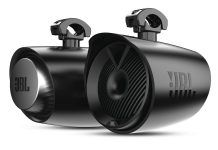Arizona Game & Fish Department Presents Boating Education
The Arizona Game and Fish Department’s Boating Safety Education courses include instruction on the basic skills required to safely operate a boat or personal watercraft, trailering your vessel, navigational rules, buoys, anchoring, legal requirements, boating emergencies, water sports and paddling.
Rock the Float. Life jackets save lives!
Take a boating education course now! Most insurance companies offer a discount on your boat or PWC insurance rate for completing one of our courses.
Courses are offered in three formats: classroom courses, home study courses and online courses. Online Powerboat Courses
Online Courses – Each of these courses is approved for use in Arizona. If you have a boating ticket and are required to take a boating safety education course, any one of these will satisfy the requirements of the court:.
- Online Paddlesports Courses
- Classroom Powerboat Courses
- Skills-Based Courses–
- Home Study Course
Free home study packet, call the Education Branch at 623 236-7258.
Boating Safety Information:Boat Safe, Boat Smart, Boat Sober
Life Jackets – Personal Flotation Devices
All vessels except sailboards and certain racing shells or rowing sculls must have at least one wearable Type I, II, III or V life jacket (PFD) that is U.S. Coast Guard (USCG) approved and of the proper size for each person on board.
Life jackets must be readily accessible, in good and serviceable condition, and sized for the intended wearer. In addition to the above requirements, vessels 16 feet in length or longer, except a canoe or kayak, must have one Type IV USCG approved throwable flotation device on board and readily accessible.
All children 12 years of age and younger must wear a USCG approved Type I, II, III life jacket (PFD) anytime while underway on any vessel. The life jacket must be worn according to the design of the manufacturer’s recommended use and must fit the child properly. All snaps must be snapped, and zippers and fasteners closed.
Each person on a personal watercraft such as a Jet Ski or Wave Runner must wear a USCG approved Type I, II, III PFD (life jacket) with all fasteners and closures secured according to the manufacturer’s design and recommended use. Further, the life jacket must be adjusted for a snug fit.
Each person being towed behind a vessel on water skis or a similar device must wear a life jacket or buoyant belt. Note, however, that buoyant belts are not approved by the USCG.
Learn How To Properly Fit A Life Jacket: https://kalkomey.wistia.com/medias/kjxtbvga0n
USCG Approved Flotation Devices
USCG Type I,
USCG Type II
USCG Type III
USCG Type IV
USCG Type V
Carbon Monoxide Poisoning
Carbon monoxide poisoning is also known as the “silent killer”. It is a colorless, odorless, tasteless gas that is very toxic even in small quantities. It is produced when a carbon fuel, such as gasoline or diesel is burned. Carbon monoxide disperses freely through the air and will travel readily throughout a boat. It is discharged as engine, generator, or appliance exhaust that may re-enter your boat through any opening.
Symptoms of carbon monoxide poisoning are throbbing temples, inattentiveness or lack of concentration, inability to think coherently, ringing in the ears, tightness across the chest, headache, drowsiness, nausea, dizziness, fatigue, vomiting, collapse, and convulsions. Protect yourself from the silent killer and download the carbon monoxide brochure.
Cold Water Immersion
Do not let the temperature outside fool you. Cold water immersion and hypothermia can occur in water as cool as 70 degrees at any time of the year, even on a warm and sunny day. Arizona winters are mild, and recreational boating is popular year-round, but a sudden and unexpected immersion into cold water can cause hypothermia and even lead to a life-threatening situation.
Entering extremely cold water causes an immediate gasp reflex that can fill the lungs with water. After falling overboard or entering the water, it is important to be wearing your life jacket (PFD). A life jacket keeps your head above water and your body on the surface.
Stay calm and move slowly. Don’t try to take off clothing in the water (a common misconception is that heavy clothing or waders weigh down your body when in fact they can trap air and help keep your body afloat).
If your boat has capsized, stay with it. More than likely, it will not sink and it can be used as a platform to maneuver, so stay on top of it as much as possible, getting yourself out of the water and maintaining stability.































